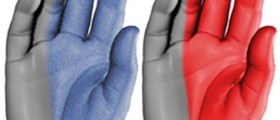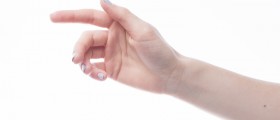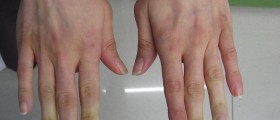
Introduction
Cubital tunnel syndrome is a condition that gets triggered by excessive amounts of the pressure on the ulnar nerve at the elbow. The ulnar nerve is located underneath the bump on the bone that is on the inner portion of the elbow. The nerve is pressed against the bone and is very susceptible to excessive pressure which leads to disturbance of the nerve functions, tingling, pain and numbness which occur in the elbow, hand, forearm and the fingers.
Causes
The ulnar nerve is located right next to the bone and it is very easily exposed to excessive pressure. If one leans against the table on the inner part of the elbow, the arm may fall asleep and the sustained pressure on the ulnar nerve may also cause pain. Repetitive exposure to excess pressure may lead to persistent pain and numbness. Some people may experience repetitive clicking of the ulnar nerve back and forth over the bone bump during the bending and straightening which may cause significant irritation. Holding the elbow in the bent position for prolonged periods of time may stretch the nerve across the medial epicondyle. Cubital tunnel syndrome is triggered by significant pressure that is sustained long enough to cause the disturbance of the functioning of the ulnar nerve.
Signs and Symptoms
Cubital tunnel syndrome is usually characterized by numbness, pain and tingling in the ring finger and the little fingers. Most symptoms occur when the nerve is exposed to excessive pressure which is caused by sitting with the elbow positioned on the arm rest or when the elbow gets bent and straightened repetitively. Symptoms can also be experienced when the elbow gets held in a bent position for prolonged periods of time. Other symptoms may include clumsiness and pinching, while some severe cases have included lost strength and bulk in the muscles.
Diagnosis
A physician must examine the distribution of the symptoms and the muscle weakness, nerve irritability and check if there are any changes in the sensations. The physician may also need to evaluate certain other medical conditions and check for diabetes and thyroid diseases. An electromyography and nerve conduction study may also need to be done in order to determine the proper diagnosis.
Treatment
Minimal nerve pressure may not require surgery and it can be resolved by changing the elbow patterns and avoiding putting it on hard surfaces. Sometimes a person may need surgery in order to relieve thepressure.











-Causes,-Symptoms,-Diagnosis,-Treatment_f_280x120.jpg)



-in-Multiple-Sclerosis_f_280x120.jpg)

Your thoughts on this
Loading...